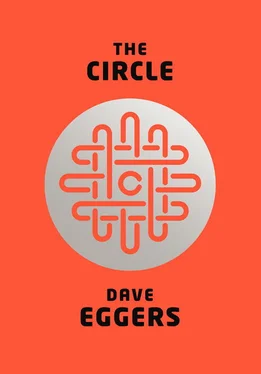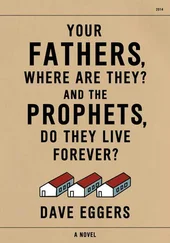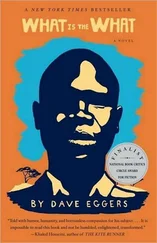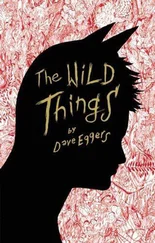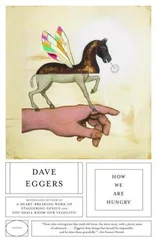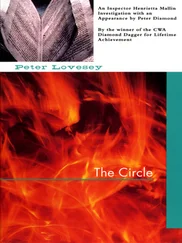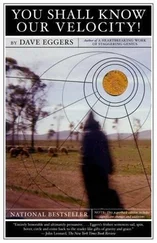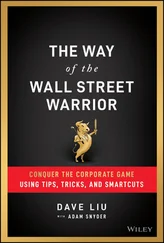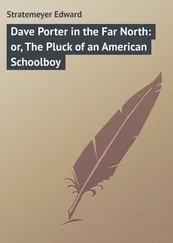“Thanks Annie,” she heard herself say.
They’d walked past a few conference rooms and lounges and were passing through the company’s new gallery, where a half-dozen Basquiats hung, just acquired from a near-broke museum in Miami.
“Whatever,” Annie said. “And I’m sorry you’re in Customer Experience. I know that sounds shitty, but I will have you know that about half the company’s senior people started there. Do you believe me?”
“I do.”
“Good, because it’s true.”
They left the gallery and entered the second-floor cafeteria—“The Glass Eatery, I know it’s such a terrible name,” Annie said—designed such that diners ate at nine different levels, all of the floors and walls glass. At first glance, it looked like a hundred people were eating in mid-air.
They moved through the Borrow Room, where anything from bicycles to telescopes to hang gliders were loaned, for free, to anyone on staff, and onto the aquarium, a project championed by one of the founders. They stood before a display, as tall as themselves, where jellyfish, ghostly and slow, rose and fell with no apparent pattern or reason.
“I’ll be watching you,” Annie said, “and every time you do something great I’ll be making sure everyone knows about it so you won’t have to stay there too long. People move up here pretty reliably, and as you know we hire almost exclusively from within. So just do well and keep your head down and you’ll be shocked at how quickly you’ll be out of Customer Experience and into something juicy.”
Mae looked into Annie’s eyes, bright in the aquarium light. “Don’t worry. I’m happy to be anywhere here.”
“Better to be at the bottom of a ladder you want to climb than in the middle of some ladder you don’t, right? Some shitty-ass ladder made of shit?”
Mae laughed. It was the shock of hearing such filth coming from such a sweet face. “Did you always curse this much? I don’t remember that part of you.”
“I do it when I’m tired, which is pretty much always.”
“You used to be such a sweet girl.”
“Sorry. I’m fucking sorry Mae! Jesus fucking Christ, Mae! Okay. Let’s see more stuff. The kennel!”
“Are we working at all today?” Mae asked.
“Working? This is working. This is what you’re tasked with doing the first day: getting to know the place, the people, getting acclimated. You know how when you put new wood floors into your house—”
“No, I don’t.”
“Well, when you do, you first have to let them sit there for ten days, to get the wood acclimated. Then you do the installation.”
“So in this analogy, I’m the wood?”
“You are the wood.”
“And then I’ll be installed.”
“Yes, we will then install you. We’ll hammer you with ten thousands tiny nails. You’ll love it.”
They visited the kennel, a brainchild of Annie, whose dog, Dr. Kinsmann, had just passed on, but who had spent a few very happy years here, never far from his owner. Why should thousands of employees all leave their dogs at home when they could be brought here, to be around people, and other dogs, and be cared for and not alone? That had been Annie’s logic, quickly embraced and now considered visionary. And they saw the nightclub—often used during the day for something called ecstatic dancing, a great workout, Annie said—and they saw the large outdoor amphitheater, and the small indoor theater—“there are about ten comedy improv groups here”—and after they saw all that, there was lunch in the larger, first-floor cafeteria where, in the corner, on a small stage, there was a man, playing a guitar, who looked like an aging singer-songwriter Mae’s parents listened to.
“Is that…?”
“It is,” Annie said, not breaking her stride, “There’s someone every day. Musicians, comedians, writers. That’s Bailey’s passion project, to bring them here to get some exposure, especially given how rough it is out there for them.”
“I knew they came sometimes, but you’re saying it’s every day?”
“We book them a year ahead. We have to fight them off.”
The singer-songwriter was singing passionately, his head tilted, hair covering his eyes, his fingers strumming feverishly, but the vast majority of the cafeteria was paying little to no attention.
“I can’t imagine the budget for that,” Mae said.
“Oh god, we don’t pay them. Oh wait, you should meet this guy.”
Annie stopped a man named Vipul, who, Annie said, would soon be reinventing all of television, a medium stuck more than any other in the twentieth century.
“Try nineteenth,” he said, with a slight Indian accent, his English precise and lofty. “It’s the last place where customers do not, ever, get what they want. The last vestige of feudal arrangements between maker and viewer. We are vassals no longer!” he said, and soon excused himself.
“That guy is on another level,” Annie said as they made their way through the cafeteria. They stopped at five or six other tables, meeting fascinating people, every one of them working on something Annie deemed world-rocking or life-changing or fifty years ahead of anyone else . The range of the work being done was startling. They met a pair of women working on a submersible exploration craft that would make the Marianas Trench mysterious no more. “They’ll map it like Manhattan,” Annie said, and the two women did not argue the hyperbole. They stopped at a table where a trio of young men were looking at a screen, embedded into the table, displaying 3-D drawings of a new kind of low-cost housing, to be easily adopted throughout the developing world.
Annie grabbed Mae’s hand and pulled her toward the exit. “Now we’re seeing the Ochre Library. You heard of it?”
Mae hadn’t, but didn’t want to commit to that answer.
Annie gave her a conspiratorial look. “You’re not supposed to see it, but I say we go.”
They got into an elevator of plexiglass and neon and rose through the atrium, every floor and office visible as they climbed five floors. “I can’t see how stuff like that works into the bottom line here,” Mae said.
“Oh god, I don’t know, either. But it’s not just about money here, as I’m guessing you know. There’s enough revenue to support the passions of the community. Those guys working on the sustainable housing, they were programmers, but a couple of them had studied architecture. So they write up a proposal, and the Wise Men went nuts for it. Especially Bailey. He just loves enabling the curiosity of great young minds. And his library’s insane. This is the floor.”
They stepped out of the elevator and into a long hallway, this one appointed in deep cherry and walnut, a series of compact chandeliers emitting a calm amber light.
“Old school,” Mae noted.
“You know about Bailey, right? He loves this ancient shit. Mahogany, brass, stained glass. That’s his aesthetic. He gets overruled in the rest of the buildings, but here he has his way. Check this out.”
Annie stopped at a large painting, a portrait of the Three Wise Men. “Hideous, right?” she said.
The painting was awkward, the kind of thing a high school artist might produce. In it, the three men, the founders of the company, were arranged in a pyramid, each of them dressed in their best-known clothes, wearing expressions that spoke, cartoonishly, of their personalities. Ty Gospodinov, the Circle’s boy-wonder visionary, was wearing nondescript glasses and an enormous hoodie, staring leftward and smiling; he seemed to be enjoying some moment, alone, tuned into some distant frequency. People said he was borderline Asperger’s, and the picture seemed intent on underscoring the point. With his dark unkempt hair, his unlined face, he looked no more than twenty-five.
Читать дальше
